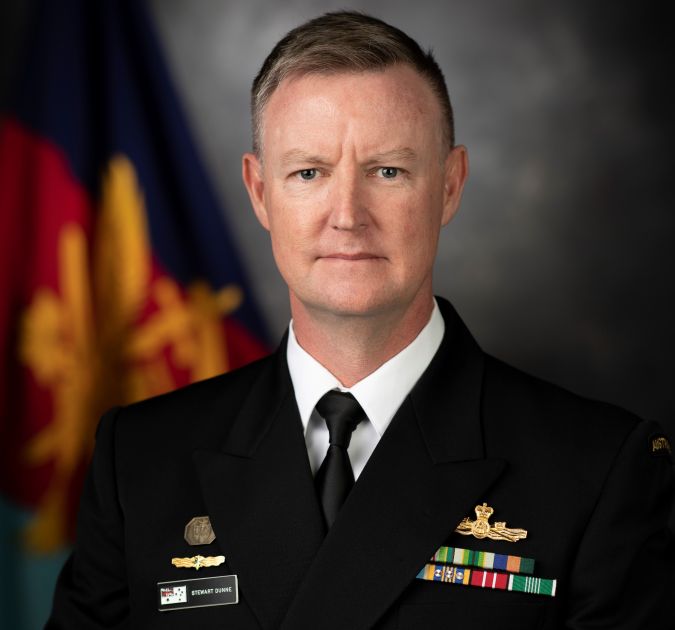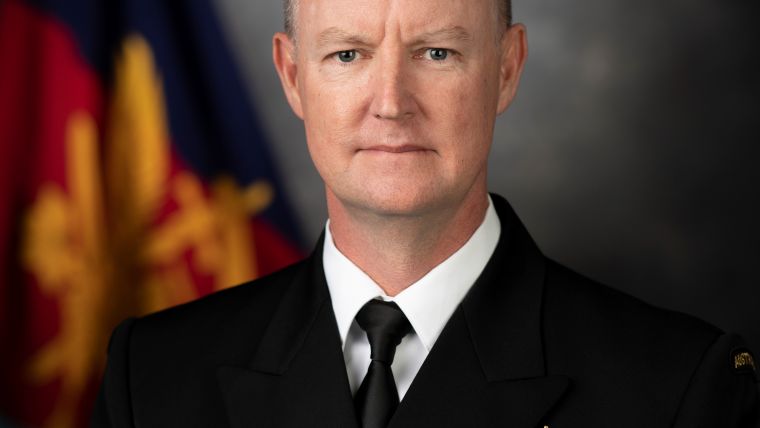Hydrographic Data Collection, Processing and Delivery at Pivotal Point
Hydrographic Experts Share Their Thoughts
Hydro International invited various leading experts with different professional backgrounds to share their thoughts on the present and future of the hydrographic industry. In this interview, Commodore Stewart Dunne, Hydrographer of Australia, shares his thoughts on the key market trends, technology drivers and challenges, and the impacts of COVID-19 and climate change on the sector.
What has been the impact of COVID-19 on your business?
The Australian Hydrographic Office (AHO) was affected by COVID-19 lockdowns, restrictions on workplace attendance and travel. As a government agency, we maintained full compliance with the directions mandated by the NSW Government to keep our people and the wider community safe. The extended lockdown and restrictions significantly affected our people’s ability to attend and access the purpose-built facilities and systems at the AHO but, operationally, we did not stop receiving data and assessing its impact on maritime safety. In fact, the amount of information we received continued to grow during lockdown.
Our very successful HydroScheme Industry Partnership Program (HIPP) continued to operate and conduct surveys around the country; a testament to the commitment of our industry partners to work and deliver within these trying conditions. We were able to pivot quickly to enable remote working arrangements and, ultimately, there was no disruption to fulfilling our maritime safety critical obligations. Additionally, we provided direct support and assistance to the Australian Government’s response to the COVID-19 pandemic, with almost 40% of our workforce seconded to Services Australia.
Travel restrictions have meant that in-person attendance at forums, meetings and other key events has essentially ceased. However, modern day technology has allowed a high level of virtual attendance to maintain a tempo of engagement with our domestic and international stakeholders, as well as our near neighbours.
The challenges presented by COVID-19 have also offered an opportunity to develop ICT advancements in our systems, and I am rightly proud of the commitment of our people and what the AHO has been able to deliver in this very challenging time.
What do you consider the key market trend in the coming years?
With the development of advanced positioning and maritime sensors, growing vessel numbers, larger vessels requiring more precise under keel clearance data, and the availability of increasingly sophisticated electronic navigation systems, there has been a steady decline in the use of traditional paper nautical charts and publications. Our customers are also demanding more of the AHO, wanting data, products and services to be delivered in different and more accessible ways. Since 2018, the International Maritime Organization has mandated that international shipping use Electronic Chart Display and Information Systems (ECDIS), and official electronic navigational charts (ENC) for primary navigation.
The International Hydrographic Organization’s (IHO) new hydrographic standards, under the banner of the S-100 Universal Hydrographic Data Model, have been the impetus behind our digital transformation strategy and implementation plan. New ENC specifications from the IHO, such as S-101, S-102, S-104 and S-111, will offer more opportunities for the distribution and consumption of high-quality navigation data and efficient route planning; far beyond the current ENC standard of S-57. From 2025, the AHO will roll out electronic charts compiled to the new S-101 ENC format. This early S-101 production will support training for navigators and pilots, product improvements and the maritime industry in Australia, ensuring we are ready for the arrival of advanced S-100 ECDIS capable ships.
Another notable change for Australian mariners will be to traditional paper charts, which will be replaced by a modern web service. This web service will allow customers or resellers to generate and print ‘on-demand paper charts’ from the most current electronic navigational chart data available. These ‘on-demand charts’ will replicate the traditional paper chart experience as far as practicable.
Which technological driver do you consider most important in the coming years?
The big shift in this space is transitioning from a product-centric technological foundation to one that is data-centric, network-enabled and based on the principles of FAIR* data. Agility and interoperability will also be important drivers for our approach to technology in the coming years.
As remote sensing and autonomous underwater vehicle technology enhance traditional hydrographic survey data collection, we are managing an unprecedented volume of hydrospatial data at a fidelity and spatiotemporal coverage never before seen; collecting data from remote and autonomous sensors in space, the ocean column, on and below the seafloor.
So, as a modern hydrographic office, we need to be agile and adopt technology that supports realizing the value of our data assets, through analysis, insight and data-driven decision-making. As technology and data-driven innovation continue to develop and mature, our products and services will also evolve through digital transformation projects and marine data infrastructures that support the principles of FAIR* data.
*Findable, Accessible, Interoperable, Reusable [FAIR Principles - GO FAIR (go-fair.org)

What do you see as the main challenge in the coming years?
We are at a pivotal point for the AHO and the way hydrographic data is collected, processed and delivered. The main challenges for the business are twofold: HIPP and transitioning organizational processes and structures to realize the S-100 Universal Hydrographic Data Model. A focused data strategy is the key driver in this space, positioning the business into a place of innovation and proactive engagement to realize the S-100 Universal Hydrographic Data Model. The HIPP is a partnership with industry to meet our National Survey Function obligations. Over the medium to long term, HIPP will help drive fundamental change in the delivery of hydrographic and oceanographic services, and the development and innovation of environmental data collection capabilities.
The exponential increase in data presents challenges to the current AHO infrastructure in terms of storage, timely processing and distribution. The opportunity to develop and contribute to new products and services as a result of S-100 and advances to modern shipping is inspiring, challenging and exciting.
The climate crisis urges companies to contribute to a safer and more sustainable world. What is your vision on this?
Climate risk offers challenges to those who use our seas and oceans for work or recreation, or who live on the coastal margins. As a government agency, we are part of the contribution that Australia is making to the global efforts to manage climate risk using practical approaches. One interesting initiative which is specific to the maritime sector is the Clydebank declaration for green shipping corridors. That agreement, which was recently signed at COP26, is an example of a practical way in which the maritime sector will contribute to a more sustainable world.
As Australia’s national hydrographic office, it is our role to support not just safety at sea, but also the sustainable use of the global ocean commons, and we will work to that end with our partners at home and overseas. The AHO looks to focus on our Pacific region and to work with our neighbours, recognizing that hydrography has a role in tracking the effects and better understanding the risks associated with climate and disaster risk impacts.
Commodore Stewart Dunne was commissioned into the Royal Australian Navy in August 1990. During his 31-year career, he has specialized as a hydrographic surveyor and gained experience at sea and ashore in the areas of command, training, operations and capability. As a long-term surveyor, he has a passion for innovation and innovative uses of technology and the Pacific region.
He assumed the role of Hydrographer of Australia on promotion to Commodore in December 2020. Stewart is recognized as a Charge Surveyor and has achieved the internationally accepted H1 specialist qualification and been awarded a Graduate Diploma of Hydrographic Surveying from Plymouth University.

Value staying current with hydrography?
Stay on the map with our expertly curated newsletters.
We provide educational insights, industry updates, and inspiring stories from the world of hydrography to help you learn, grow, and navigate your field with confidence. Don't miss out - subscribe today and ensure you're always informed, educated, and inspired by the latest in hydrographic technology and research.
Choose your newsletter(s)
























